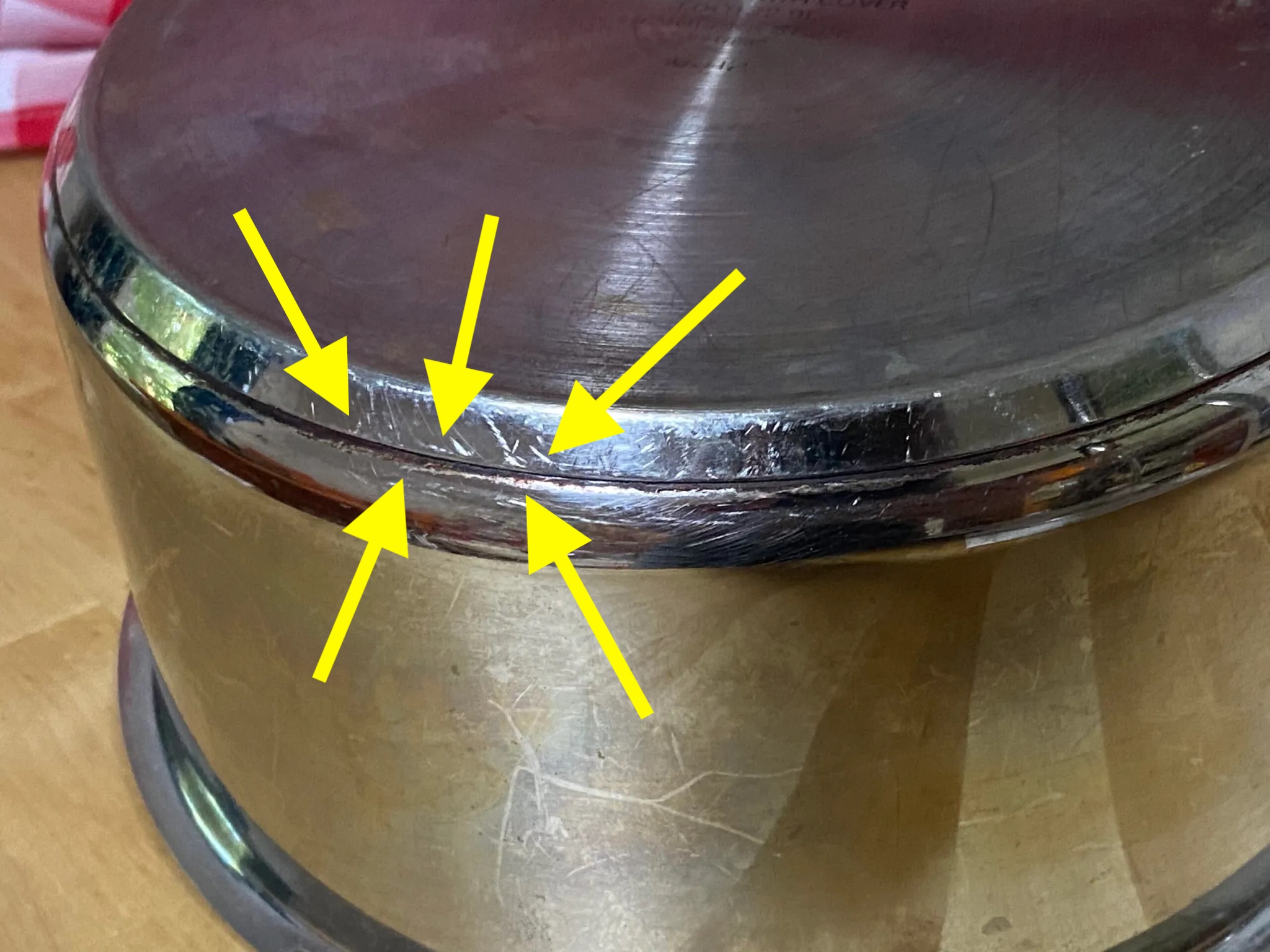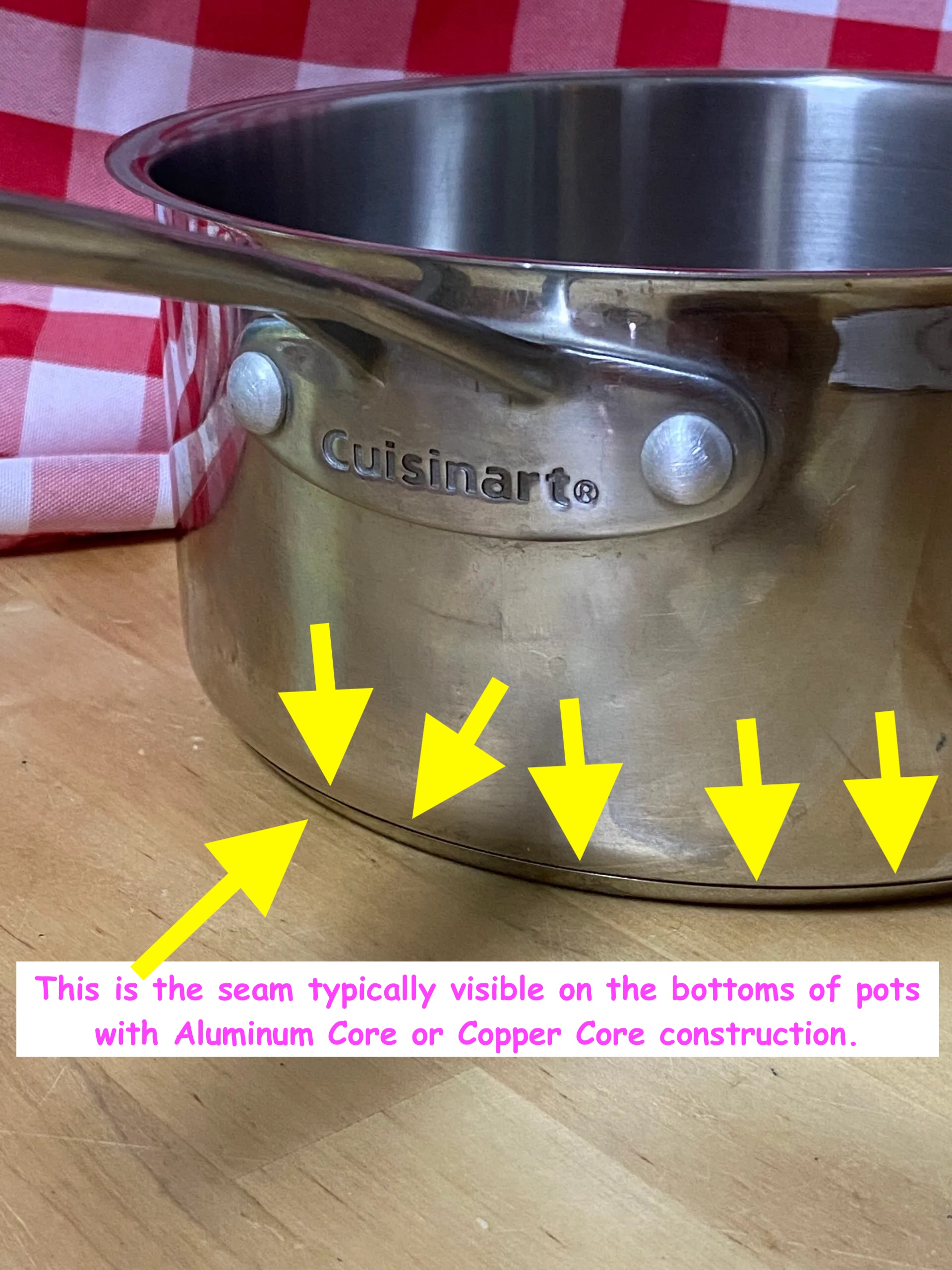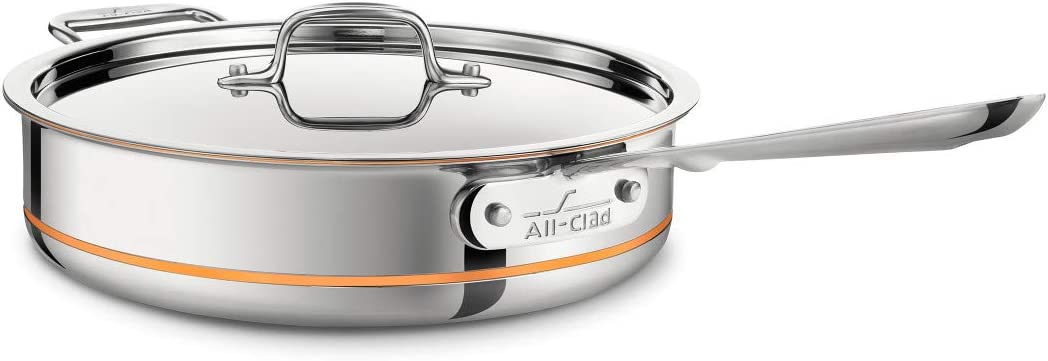“My stainless steel pot has an ‘Aluminum core’… is that a problem? Isn’t Aluminum unhealthy to use for cooking?”
This is an ad-free article.
Advertising and affiliate income help Lead Safe Mama, LLC cover the costs of the work we do here (independent consumer goods testing and childhood Lead-poisoning prevention advocacy). We have removed ads from most of our more widely-read articles (like this one!) to make them easier for you to read. In addition to supporting this work by starting any shopping you might be doing with clicks on our affiliate links, if you would like to support the independent consumer goods testing and childhood Lead-poisoning prevention advocacy work of Lead Safe Mama, LLC by making a contribution (which will also help us keep our more widely-read articles ad-free), click here. Thank you!
For those new to the Lead Safe Mama website:
Tamara Rubin is a multiple-federal-award-winning independent advocate for childhood Lead-poisoning prevention and consumer goods safety, and a documentary filmmaker. She is also a mother of Lead-poisoned children (two of her sons were acutely Lead-poisoned in 2005).
- Tamara owns and runs Lead Safe Mama, LLC — a community collaborative woman-owned small business for childhood Lead poisoning prevention and consumer goods safety.
- Since 2009, Tamara has been using XRF technology (a scientific testing method) using the exact instrumentation employed by the U.S. Consumer Product Safety Commission to test consumer goods for toxicants (specifically heavy metals — including Lead, Cadmium, Mercury, Antimony, and Arsenic).
- Since July of 2022, the work of Lead Safe Mama, LLC has been responsible for 5 product recalls (FDA and CPSC).
- All test results reported on this website are science-based, accurate, and replicable.
- Items that Lead Safe Mama, LLC reports on are tested multiple times to confirm the results published (for each component tested).
- Tamara’s work was featured in Consumer Reports Magazine in February 2023 (March 2023 print edition) and The Guardian in November 2023.

Published: December 10, 2023 — Sunday
What about multi-layer construction stainless steel pans with a Copper “core?”
Or, with an Aluminum “core?”
Is an “Aluminum core” a bad thing?
Isn’t Aluminum something we are “supposed to avoid” in cookware?
In general, Lead Safe Mama, LLC recommends avoiding Aluminum for food-contact surfaces of cookware — and avoiding cast Aluminum whenever possible. Examples of Aluminum cookware items that you may want to avoid include Aluminum stock pots, and Aluminum baking trays/cookie sheets.
Outside of the potential concerns for Aluminum impacts on your food (impacts for which the scientific studies show conflicting data), while products made from sheet Aluminum (like the Aluminum used for a lot of cookie sheets, and other bakeware) are generally Lead-free, cast-Aluminum (thick, heavier Aluminum construction often used for large cooking pots, and many utensils like garlic presses; ice cream scoops or meat tenderizers, hand-held juice presses, KitchenAid stand mixer attachments, and other similar utensils) is more-often-than-not, significantly Lead-contaminated.
Here are some examples of Lead-contaminated cast Aluminum items —
each bulleted item is a link to a group of articles concerning that subject:
Not ALL similar things are the same, however…
Many companies offer premium multi-layer stainless steel pans, boasting a “sandwiched” construction — with a Copper or Aluminum “core,” bonded between two stainless steel layers. In this style of construction, the food contact layer is stainless, as is the bottom of the pan (that touches the cooking surface of your stove or oven). The Copper or Aluminum core layer is specifically added to the bottom of the vessel to enhance the speed and evenness of heating, as both Aluminum — and especially Copper — have much better thermal conductivity (= faster and more even heating) than stainless steel (which is after all, typically 70-80% Iron). Here’s an example of typical XRF test results for Stainless Steel — link.
As demonstrated by the two images above and more specifically by the image at the top of this page, the core is normally fully encased between layers of stainless steel, and accordingly, is not exposed at all. For this type of pan — as clearly visible in the images above — you can see a “line” in a ring around the bottom of the pan (typically about 3/8 of an inch up from the bottom of the pan), but no other metal is visible at the seam between the bottom of the pan and the top/vertical side walls of the pan. Again, in an example like this, the Aluminum core is fully encased in two other layers of solid metal, and there is no opportunity for the Aluminum (or Copper) layer to interact with the food prepared in the pan or impact the health of the user of the pan.
The exception to this common construction for pans with a Copper or Aluminum core is that there are some designs (typically from some of the higher-end/ more expensive brands) in which the Copper core is visible as a band of Copper showing around the lower edge of the pan — about 1/2 an inch or 3/4 of an inch up from the bottom of the pan. In a case like this, the visible Copper band is left as an accent for decorative purposes (see image below). However, again, this does not impact the food cooked in the pans at all, as it is not a food-contact surface. One does not typically see an exposed Aluminum core band as it is not pretty/ does not serve a decorative purpose. (If anyone is aware of an Aluminum-core construction pan — that has an exposed Aluminum band similar to the Copper band shown below — please do share that information with me.)
The image directly below this shows the exposed decorative copper edge on an All-Clad pan with a Copper core. Note: I do not recommend this particular brand (see why here) — and am only sharing the image as an illustration of this type of design!
In Summary
There is ZERO health concern for the Aluminum (or Copper) content of a pan with a “core” construction for heat dissipation, as the material of the core has ZERO contact with the food prepared in the pan (and in the case of Aluminum, it is typically fully 100% encased!).
Tamara Elise Rubin
Owner — Lead Safe Mama, LLC
~ End ~
Never Miss an Important Article Again!
Join our Email List












Thanks! I see this question pop up among moms so often. I have a core and wasn’t worried. A follow up question I see a lot is if the stainless gets scratched. I feel that the stainless would be thick enough and should be able to handle stainless steel tools. But I do see that secondary line of questioning right after this one. So, for all the moms worried about scratching their core pots maybe a little chime in might help put their minds at ease. Thanks for your work.
Tamara,
The edges on top of these pots are not rolled. The aluminum core sandwiched in between the stainless is open at the top and when food or water is spilled from the pots, the food or water will come in contact with the aluminum. You can contact the manufacturer to get confirmation.
“Tramontina’s 12-piece Tri-Ply Clad Stainless Steel Cookware Set is professional quality-cookware made for everyday use at home. Tri-Ply Clad features a layer of 18/10 stainless steel with a layer of magnetic stainless steel, with a layer of aluminum in between, that extends up the sides to the top of the pan.”
https://www.costco.com/tramontina-12-piece-tri-ply-clad-stainless-steel-cookware-set.product.100809273.html
Wow, this is very important and new information. Thank you! It looks like the Tramontina then doesn’t have the “seam” on the bottom half inch so we can tell that the aluminum extends all the way up to the top and thus in contact with the food surface when poured out of the pot. Hopefully Tamara can follow up on this and test a Tramontina to see if indeed there is exposed aluminum. And also if the other aluminum core pots that have the “seam” on the bottom half inch are always the kind that has the aluminum only on the bottom and not going up the sides.
I think most modern ‘sandwiched’ 3-5 ply stainless brands have ‘exposed’ aluminum at the top of pots. I’ve been concerned over this for a while but wrote it off thinking…I’m not cooking directly on the aluminum, however just found out about all clad’s class action where people were cutting fingers due the aluminum core (largest part of the pan, the SS exterior and interior layers are actually extremely thin) eroding to the point that the SS portion of rim was protruding and sharp. My concern being….if the raw aluminum is that ‘soft’ to wear away appreciably….were is that aluminum ending up? In addition, general knicks of the aluminum falling into food etc. it’s one thing to cook in aluminum and have it leach in trace amounts, which is bad enough….but worse (to my mind) is it eroding off in small chunks in my kitchen environment!
Can’t upload pics to this forum to show my own pans but this link (scroll down) has a good pic showing the layers and how thick the aluminum/thin the SS is
https://thepan-handler.com/3-ply-vs-5-ply-cookware/
I believe IKEA is the same design. This raw aluminum edge (Which inevitably comes into contact with food as you pour it over the side) imo should somehow be covered in SS. I think there may be one co. that has a line that is made this way (Demeyer?). Looking for more if they exist
Upon inspecting one of my 3ply pans (aluminum being the major metal component in between thin layers of SS) I noticed a visible Knick…I wiped off with wet wipe and a small piece of aluminum came off. Had I not been observing, I’d have missed this small, but still visible piece of aluminum metal piece. How often have these small chunks ended up directly in my food or onto other plates (while drying dishes). Yuck!
I am so frustrated looking for a set of stainless right now. The sets available at Target both have black markings inside! Then we saw the set mentioned above at Costco and were about to purchase that until I read the above comment about the aluminum sides. I’m at a loss on where to look!
She had an Amazon store with links!
Hello, I am currently looking to purchase stainless steel pots and pans. Did you fins any without the black marking inside and without exposed aluminum?
Thanks for a very helpful site. I wonder if you can clarify the following. I just purchased a Tramontina Tri-Ply Clad stainless steele 4 qt. sauce pot and 2 qt. sauce pan with aluminum encased between two layers of stainless steele. Since there is no seam anywhere on either pot does this make the aluminum center layer unsafe for food?
Are you familiar with the stainless steel cookware brand, Silga?
No.